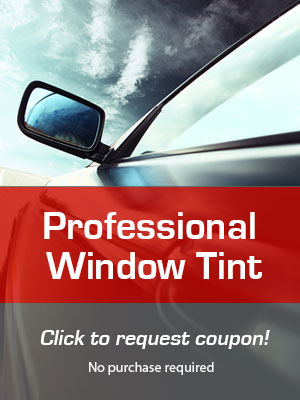Automotive window tint film manufacturers provide an impressive list of reasons to tint the windows in your car. It prevents cancer by blocking the suns ultraviolet rays. It provides security by making it more difficult for thieves to break your cars windows. It protects you and your passengers from flying glass in an accident. It keeps the inside of your car cooler. It protects your seats and trim from cracking and fading. It provides privacy. It saves your eyes by reducing glare and harsh sunlight. And it changes the appearance of your car.
There are a wide variety of window films and installation services available. The amount of tint varies from just a slight tint to film that makes the windows appear almost opaque. State regulations limit the amount of tint that can be applied to various window surfaces. Your installer can provide advice about regulations and the best tint for your part of the country.
To start with, window tinting is a polyester film that ranges in thickness from 2 to 7 millimeters thick. An adhesive activated by moisture and pressure is applied to one surface. Bonded to the outside of the exposed surface (always on the inside of the car), there is a scratch resistant coating. In between the adhesive and the hardcoat is where the differences in
window film can be determined.
The window film itself is dyed to absorb heat and block sunlight. This is the simplest technique used in the less expensive window films. More dye means darker windows. The darker the windows, the more heat and light are absorbed.
To absorb more heat without making the windows darker, some films add a layer of metalized film. The reflective metals provide a slight mirrored appearance without making the tint too dark. Additional bonded layers and complicated technology make these films more expensive.
DIY Window Tinting
Applying the window film can be frustrating for the do-it-yourselfer. First, it is important that the window glass is very clean. Wet film is placed on the inside of the car’s window. Air bubbles and excess moisture are pressed from between the film and the glass using a squeegee or
rigid plastic card. Some processes require a blow dryer to mold the film and activate the adhesive. Excess film is trimmed away and left to cure for 3 or more days before the windows are rolled down. The tinted window film can be cleaned with any normal non-abrasive window cleaner and a soft towel after about 30 days.
Properly applied, window tint can improve your used cars value and provide comfort for the driver and passenger for many years. Not only can Waxwerks apply the window tinting to your car, adding value. We can also help you maintain your car’s value for years to come with auto detailing. Waxwerks proudly serves the Indianapolis area for over 20 years. We pride ourselves in the excellent work and even better customer service we provide in Castleton at 82nd & Bash Street. For professional car detailing,dent removal, glass repair, car stereo installation or window tinting give us a call at 317-577-9700.













Comments are closed.